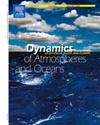Environmental Conditions Affect Striped Red Mullet (Mullus surmuletus) Artisanal Fisheries
IF 1.9
4区 地球科学
Q2 GEOCHEMISTRY & GEOPHYSICS
引用次数: 0
Abstract
The influence of environmental variables (oceanographic and climatic) on the catch rates of striped red mullet (Mullus surmuletus) by artisanal fishery was investigated using different time series models (Dynamic Factorial Analyses; Min-Max Factorial Analyses and Generalized Least Square models). Climatic and oceanographic survey data were collected at different areas of the Portuguese coast (Northwestern, Southwestern and South-Algarve) with distinct oceanographic regimes. Time series analyses reveal an effect of fishing effort in catch rates in Southwestern areas. Variability in M. surmuletus catch rates was associated to regional environmental multi-controls. Upwelling and westerly winds were the main drivers of catch rates variability across the three areas but the type of relationship varied among them. A consistent relationship between catch rates and environment factors was identified during the peak period of seasonal recruitment (spring to summer) in Southwest and South-Algarve coast, with Upwelling-summer and Sea surface temperature-spring affecting short term (lag 2 years) catch rates. In South-Algarve the increase in SST in summer, during peak of spawning, was correlated with the catch rate increase with a lag of two years. Environmental effect on catch rates reveals that fisheries management needs to accommodate the regional effect of environment variables on species biology to better define future assessment plans (catch limits).环境状况影响红条纹鲻鱼(Mullus surmuletus)的手工渔业
采用不同的时间序列模型(动态析因分析;最小-最大析因分析和广义最小二乘模型)。气候和海洋学调查数据是在葡萄牙海岸的不同地区(西北部、西南部和阿尔加维南部)以不同的海洋学制度收集的。时间序列分析揭示了西南地区捕捞努力度对捕捞率的影响。沙鼠捕获率的变异与区域环境多重控制有关。上升流和西风是三个地区捕捞率变化的主要驱动因素,但它们之间的关系类型有所不同。在西南和南阿尔加维海岸季节性捕捞高峰期(春季至夏季),捕捞率与环境因子之间存在一致的关系,上升流-夏季和海面温度-春季影响短期(滞后2年)捕捞率。在南阿尔加维,夏季产卵高峰期海温的增加与捕捞率的增加相关,滞后两年。环境对捕捞率的影响表明,渔业管理需要适应环境变量对物种生物学的区域影响,以更好地确定未来的评估计划(捕捞限制)。
本文章由计算机程序翻译,如有差异,请以英文原文为准。
求助全文
约1分钟内获得全文
求助全文
来源期刊

Dynamics of Atmospheres and Oceans
地学-地球化学与地球物理
CiteScore
3.10
自引率
5.90%
发文量
43
审稿时长
>12 weeks
期刊介绍:
Dynamics of Atmospheres and Oceans is an international journal for research related to the dynamical and physical processes governing atmospheres, oceans and climate.
Authors are invited to submit articles, short contributions or scholarly reviews in the following areas:
•Dynamic meteorology
•Physical oceanography
•Geophysical fluid dynamics
•Climate variability and climate change
•Atmosphere-ocean-biosphere-cryosphere interactions
•Prediction and predictability
•Scale interactions
Papers of theoretical, computational, experimental and observational investigations are invited, particularly those that explore the fundamental nature - or bring together the interdisciplinary and multidisciplinary aspects - of dynamical and physical processes at all scales. Papers that explore air-sea interactions and the coupling between atmospheres, oceans, and other components of the climate system are particularly welcome.
 求助内容:
求助内容: 应助结果提醒方式:
应助结果提醒方式:


